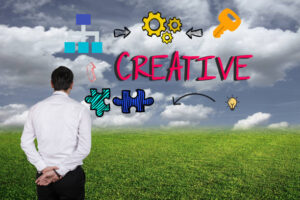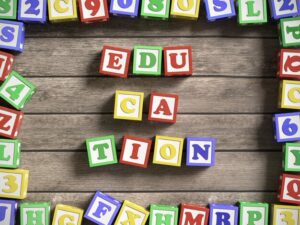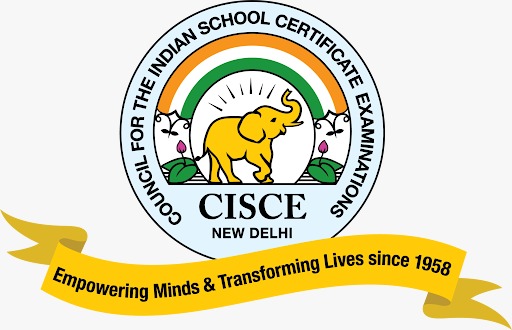Have you ever wondered how plants grow so healthy and green? Or why do we need nitrogen even though we breathe it all the time? The answer lies in the fascinating nitrogen cycle! The nitrogen cycle is nature’s way of recycling nitrogen, one of the most important elements for life on Earth. It moves through the air, soil, water, plants, and animals, ensuring that all living things get the nutrients they need to survive. But there’s a catch—plants and animals can’t use nitrogen straight from the air! That’s why the nitrogen cycle is so important—it transforms nitrogen into different forms that living things can actually use. In international schools, students often learn about the nitrogen cycle as part of their science curriculum, helping them understand its role in sustaining life on Earth.
Why is the Nitrogen Cycle Important?
Nitrogen might not be something you think about every day, but it’s everywhere! In fact, about 78% of the air we breathe is made of nitrogen gas (N₂). However, plants and animals can’t absorb nitrogen directly from the air, which means it has to go through a special process to become useful. This is where the nitrogen cycle comes in! It helps:
- Plants grow by providing essential nutrients.
- Animals (including humans!) get nitrogen by eating plants or other animals.
- Prevents excess nitrogen from polluting the environment.
- Balances the amount of nitrogen in the soil, air, and water.
Without the nitrogen cycle, our planet wouldn’t be able to support life as we know it!
Stages of the Nitrogen Cycle
The nitrogen cycle is made up of several important steps that ensure nitrogen keeps moving through nature. Let’s break it down into five key stages:
1. Nitrogen Fixation – Making Nitrogen Usable
Think of nitrogen fixation as nature’s way of unlocking nitrogen from the air. Special bacteria found in soil and plant roots (like in legumes such as beans and peas) take nitrogen gas (N₂) and convert it into ammonia (NH₃), a form that plants can use. Even lightning helps with nitrogen fixation by breaking nitrogen molecules apart and forming nitrogen compounds in the soil.
2. Nitrification – The Double Conversion
Once ammonia is available, another group of bacteria steps in! Nitrification is a two-step process:
Nitrosomonas bacteria convert ammonia into nitrites (NO₂⁻), but plants still can’t use this form.
Nitrobacter bacteria convert nitrites into nitrates (NO₃⁻), which plants can absorb through their roots. This step is like a natural fertilizer factory!
3. Assimilation – Plants Take It In
Now that nitrates are in the soil, plants eagerly absorb them through their roots. They use nitrogen to create essential molecules like proteins, DNA, and chlorophyll (which makes plants green and helps them with photosynthesis). When animals eat these plants, they also get the nitrogen they need to grow and survive.
4. Ammonification – Recycling Dead Matter
What happens when plants and animals die or release waste? Decomposers like fungi and bacteria break down dead matter and waste, releasing ammonia back into the soil. This process, called ammonification, ensures that nitrogen keeps cycling through the ecosystem.
5. Denitrification – Back to the Atmosphere
Finally, another group of bacteria, called denitrifying bacteria, convert nitrates back into nitrogen gas (N₂) and release it into the atmosphere. This step completes the nitrogen cycle and keeps the balance of nitrogen in the air and soil.
Human Impact on the Nitrogen Cycle
Human activities, such as excessive use of fertilizers, burning fossil fuels, and deforestation, can disrupt the nitrogen cycle. Too much nitrogen in the environment can lead to water pollution, causing harmful algal blooms that affect marine life. It is important to use fertilizers responsibly and adopt sustainable farming practices to maintain a healthy nitrogen balance.
Many discoveries related to the nitrogen cycle were made by famous scientists and their inventions. For example, Fritz Haber developed the Haber-Bosch process, which allowed nitrogen from the air to be converted into ammonia, a crucial component in fertilizers. This invention significantly increased agricultural productivity and changed the way we produce food globally.
- Fertilizers Overload the Soil
Farmers use nitrogen-based fertilizers to help crops grow faster, but using too much can lead to soil pollution and water contamination. Excess nitrogen can wash into rivers and lakes, leading to harmful algal blooms that kill fish and marine life. - Burning Fossil Fuels Releases Nitrogen Oxides
Cars, factories, and power plants release nitrogen oxides (NOₓ) into the air, leading to air pollution, acid rain, and even climate change. This disrupts the natural nitrogen balance. - Deforestation Reduces Nitrogen Recycling
Trees and plants help recycle nitrogen, but when forests are cut down, the nitrogen cycle is disrupted. This leads to nutrient loss in the soil and can harm plant and animal life.
How Can We Protect the Nitrogen Cycle?
Since nitrogen is so important for life on Earth, we need to protect and maintain its cycle. Here’s what we can do:
- Use organic fertilizers and compost instead of chemical fertilizers.
- Plant cover crops like beans and peas to naturally restore nitrogen in the soil.
- Reduce fossil fuel use by using cleaner energy sources like solar and wind power.
- Protect forests and plant more trees to help balance nitrogen levels.
Fun Facts About the Nitrogen Cycle
- Did you know? Nitrogen makes up 3% of the human body!
- Cows contribute to the nitrogen cycle by producing nitrogen-rich waste.
- Lightning strikes produce nitrogen compounds that help fertilize the soil.
Pea plants have a superpower! They form a special relationship with bacteria that naturally fix nitrogen in the soil.
Conclusion
The nitrogen cycle is essential for maintaining life on Earth, ensuring that nitrogen moves through the air, soil, plants, and animals in a balanced way. Without it, plants wouldn’t grow, animals wouldn’t get the nutrients they need, and ecosystems would struggle to survive. Understanding the nitrogen cycle helps us appreciate nature’s incredible recycling system and the role we play in protecting it. That’s why the best schools in Bangalore include this topic in their curriculum, helping students learn how nature sustains life and how human activities impact the environment. By taking small steps like using organic fertilizers and reducing pollution, we can help maintain a healthy nitrogen cycle for future generations!
FAQs
The nitrogen cycle ensures nitrogen is transformed into usable forms for plants and animals, supporting life on Earth.
Overuse of fertilizers, burning fossil fuels, and deforestation disrupt the natural balance of nitrogen, leading to pollution and environmental damage.
Bacteria help convert nitrogen into different forms, making it available for plants and animals. They are essential in nitrogen fixation, nitrification, ammonification, and denitrification.
During denitrification, bacteria convert nitrates back into nitrogen gas, releasing it into the atmosphere and completing the cycle.
Atmospheric nitrogen (N₂) is too stable for plants to absorb, so it must be converted into ammonia or nitrates through nitrogen fixation.






